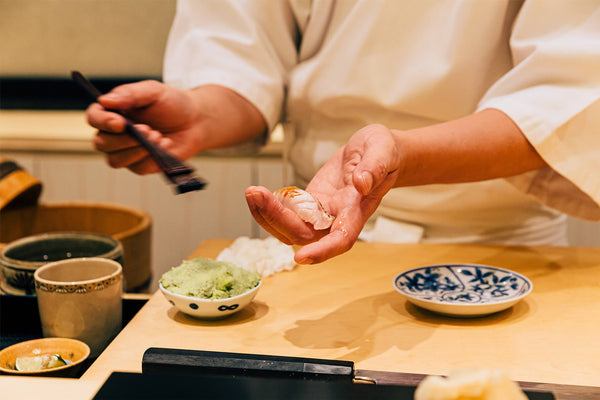Taking Care of Your Japanese Kitchen Knives

Japanese kitchen knives are precision tools that demand respect. When treated with the proper care and attention, these beautiful and well-crafted knives can last a lifetime. Indeed, in Japan, it is not unusual for sets of kitchen knives to be passed on from father to son, or from chef to apprentice.
Of course, if you expect your own knives to last so long, you need to be able to care for them. In this article, we will lay out several useful tips for keeping your Japanese kitchen knives in top condition but, if you’re in a rush, just remember the Three Golden Rules…
The Three Golden Rules of Kitchen Knife Care
Rule #1
Never, ever, under any circumstances, put your Japanese kitchen knife in a dishwasher. Both the motion of the machine’s operation and the chemicals used in the dishwashing detergents can cause serious damage to the blade and handle alike.
Rule #2
Protect the blade, when not in use, by hanging your knives from a magnetic knife strip, using a knife block with the correctly-sized slots, or using individual sheaths before slipping them into a drawer.
Rule #3
Do not use the blade of your Japanese kitchen knife to sweep ingredients off the cutting board into a pan, or peelings into the bin. Japanese kitchen knives have very thin blades, much thinner than Western knives, designed specially for precision cutting. Sweeping your chopping surface in this manner can blunt and even damage the blade over time.
General Tips for Japanese Kitchen Knife Care
If you’re already keeping to the Three Golden Rules, you’re ready to start familiarising yourself with these other tips for quality knife care:
Do not immerse your knives for long in any liquid, as it can damage the handle and blade.Prior to using your knife with food, clean it with alcohol or wash it with hot, soapy water and rinse it clean.
Periodically, apply a thin film of lubricant to the blade’s surface and rub in well. This prevents oxidation on the surface of the knife and reduces the risk of corrosion.
Protect the handles, as well as the blade. Rub furniture wax or polish into the wooden handles and use household brass polish to clean up any brass fasteners.
Don’t use the blade of your knife for sawing through a tin can, prising the lid off a container, or any other purpose than that of cutting ingredients.
Sharp blades are safer, by far, than dull ones. Use high-quality sharpening tools, such as whetstones, to keep your blade sharp.
Sharpening Stones
Of course, your knives aren’t the only utensils you need to take care of – your whetstone also needs to be looked after if it is to work effectively as a sharpening tool. Fortunately, it is easy to maintain your stones, so long as your follow these two basic principles:
Prior to sharpening: your whetstone only needs a splash of water prior to use. If you soak the stone, it can be dangerous to handle, you could also risk slipping and injuring yourself.
After sharpening: allow your whetstone to dry thoroughly. Sharpening stones are porous and, if put away wet or damp, can become a breeding ground for mould. Not only is this unsanitary in a kitchen environment, it can also cause make your stone less effective for the job at hand.
Now you know how to look after your Japanese kitchen knives, there’s no better time to invest in a high-quality set for your own kitchen. Here at SushiSushi, we supply the very best in Japanese kitchen knives from some of the most-respected manufacturers in Japan. Visit our online store to see our impressive range, or check out our Masterclass for more details about the various types of Japanese kitchen knives.
Also in News

SushiSushi are Supported by the Japanese Government
Big News: We have now been added as an approved supporter of Japanese food by the Japanese Government itself! We have officially received our Program of Japanese Food and Ingredient Supporter Stores Overseas certificate from the Japanese Government. 🇯🇵 We are 1 of only 5 certified suppliers in the whole United Kingdom verified!*

Etiquette for sushi restaurants: the right way to eat sushi




